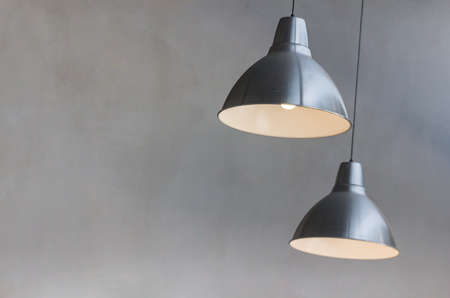Introduction: Navigating Lighting in British Homes
When it comes to British homes, lighting is often an afterthought, yet it plays a pivotal role in shaping both the mood and functionality of a living space. Across the UK, many households fall into common pitfalls—ranging from relying solely on overhead fixtures to neglecting task lighting or failing to maximise natural light. These missteps not only affect daily comfort and ambience but can also have a direct impact on property value and energy efficiency. As British homeowners increasingly seek ways to create inviting, practical, and investment-worthy interiors, understanding the significance of a well-planned lighting scheme becomes essential. In this article, we’ll explore the most frequent lighting mistakes found in UK homes and provide practical strategies to help you avoid them, ensuring your living spaces are both beautifully lit and future-proof.
2. Over-Reliance on Overhead Fixtures
One of the most common lighting mistakes in British homes is the tendency to rely solely on a single ceiling light fixture in each room. This approach, although traditional and convenient, often results in flat or harsh lighting that fails to create a comfortable or visually appealing atmosphere. In many UK properties—especially period homes and smaller city flats—the standard pendant ceiling lamp provides illumination but lacks depth, leaving corners dim and spaces feeling cold or clinical. To address this, homeowners should consider adopting a layered lighting strategy that incorporates various types of light sources. By combining ambient, task, and accent lighting, it’s possible to add warmth, flexibility, and sophistication to any interior.
Layered Lighting: A Brighter Alternative
Instead of depending exclusively on overhead fixtures, integrating table lamps, floor lamps, and wall sconces can dramatically enhance both functionality and ambience. For example, using a mix of uplighters and downlighters can help balance shadows and highlights, while strategically placed table lamps create inviting pools of light ideal for reading or relaxing. The table below outlines typical lighting solutions and their recommended uses in British homes:
| Lighting Type | Best Use Case | Benefits |
|---|---|---|
| Ceiling Fixture | General illumination | Brightens entire room; good for tasks |
| Table Lamp | Living rooms, bedrooms | Adds warmth; flexible placement; ideal for reading |
| Floor Lamp | Lounge areas, corners | Fills shadowy spaces; enhances mood |
| Wall Sconce | Hallways, staircases | Saves space; creates layered effect |
Investment Insight: Adding Value Through Thoughtful Lighting
From an investment perspective, thoughtfully layered lighting not only improves day-to-day comfort but can also increase the appeal—and even the value—of your property. Modern buyers in the UK market are increasingly looking for homes that feel bright yet cosy, so upgrading your lighting scheme is a strategic way to stand out in a competitive housing landscape.
![]()
3. Neglecting Natural Light
British homes often contend with unique challenges when it comes to natural light. The UK’s famously overcast weather and the prevalence of period properties—many with small or awkwardly placed windows—can leave interiors feeling gloomy and underlit. It’s a common mistake to overlook the potential of maximising what daylight is available. Instead of accepting dim spaces as inevitable, homeowners can take strategic steps to make the most of natural light. Choosing light colours for walls and ceilings is an effective way to reflect more sunlight throughout a room, instantly brightening even north-facing spaces. Mirrors are another powerful tool; when positioned opposite windows, they bounce light deeper into the home, creating an illusion of spaciousness and increasing overall brightness. Window dressings also play a critical role. Opt for sheer fabrics or blinds that can be fully retracted during the day rather than heavy curtains, which block precious daylight. For those living in conservation areas or historic buildings, bespoke solutions like secondary glazing or carefully selected shutters can improve insulation without sacrificing natural illumination. By thoughtfully enhancing existing daylight, British homeowners can create warmer, more inviting interiors while reducing reliance on artificial lighting—a smart move both aesthetically and financially.
4. Misjudging Bulb Choices and Colour Temperatures
One of the most common lighting mistakes in British homes is confusion over wattages, lumens, and colour temperatures. With the UK’s transition from traditional incandescent bulbs to energy-saving LEDs and CFLs, many homeowners still equate brightness with wattage—a misconception that often results in either overly dim or glaringly bright rooms. Instead, it’s essential to focus on lumens (the true measure of brightness) and colour temperature (measured in Kelvins) when selecting bulbs for different spaces.
Understanding Lumens and Wattages
Unlike wattage—which only tells you how much energy a bulb uses—lumens directly indicate how much light a bulb emits. For example, a 60W incandescent bulb roughly equals an 800-lumen LED, but with a fraction of the energy consumption. Here’s a quick reference:
| Room Type | Recommended Lumens | Typical Bulb Wattage (LED) |
|---|---|---|
| Lounge/Living Room | 1,500-3,000 lm | 14-20W total |
| Bedroom | 1,000-2,000 lm | 10-15W total |
| Kitchen | 3,000-4,000 lm | 25-30W total |
| Bathroom | 1,500-2,500 lm | 14-18W total |
The Importance of Colour Temperature in British Homes
Bespoke to the British preference for ‘cosy’ environments—think rainy evenings and snug interiors—the choice of colour temperature plays a pivotal role. Colour temperature is measured in Kelvins (K), with lower values (2,700K–3,000K) giving off a warm, yellowish light ideal for living rooms and bedrooms. Higher values (4,000K–6,500K) emit cooler, bluish tones better suited for kitchens and bathrooms where clarity is key.
Choosing the Right Bulb for Each Space
| Room Type | Ideal Colour Temperature (Kelvin) | Mood/Effect Created |
|---|---|---|
| Lounge/Living Room | 2,700K–3,000K (Warm White) | Relaxed & Cosy |
| Bedroom | 2,700K–3,000K (Warm White) | Soothed & Restful |
| Kitchen | 4,000K (Cool White) | Crisp & Energising |
| Bathroom | 4,000K–5,000K (Cool/Daylight White) | Clean & Brightening |
| Home Office/Study | 4,000K–6,500K (Cool/Daylight White) | Energised & Focused |
Avoiding Common Pitfalls: Practical Advice for UK Homes
If you’re seeking that signature British ambience—a balance between inviting warmth and practical illumination—always check both the lumen output and colour temperature before purchasing bulbs. Layer your lighting with a combination of ceiling lights for general brightness and table or floor lamps for softer zones. And remember: opt for dimmable options wherever possible to adapt your lighting to every mood and occasion.
5. Ignoring Zones and Task Lighting
One of the most prevalent lighting oversights in British homes is the lack of dedicated task lighting, particularly in functional zones such as kitchens, home offices, and reading nooks. Relying solely on overhead or ambient lighting often results in dimly lit worktops, shadowy corners, and eye strain during focused activities. This not only affects day-to-day utility but can also have a tangible impact on your comfort and wellbeing.
The Importance of Specialist Lighting
Task lighting is designed to illuminate specific areas where precision and clarity are paramount—think under-cabinet lights for food prep, adjustable lamps for desks, or directional wall lights beside your favourite armchair. Without these targeted solutions, even the most stylish space can fall short in practicality, making everyday tasks unnecessarily challenging.
Practical Tips for Introducing Task Lighting
- In the Kitchen: Install LED strips or puck lights beneath cabinets to brighten up work surfaces. This simple upgrade delivers both energy efficiency and improved visibility for chopping, cooking, and cleaning.
- For Reading Nooks: Opt for flexible floor lamps or wall-mounted swing arm lamps that provide focused illumination without occupying valuable side table space.
- Home Offices: Choose desk lamps with adjustable brightness and positioning to reduce glare on screens and minimise eye fatigue during long working hours.
Boosting Utility and Wellbeing
By thoughtfully zoning your spaces and investing in specialist lighting solutions, you not only make daily routines easier but also create a more comfortable and inviting home environment. Modern British interiors benefit greatly from this layered approach—enhancing both aesthetics and functionality, while supporting your overall wellbeing.
6. Style vs. Functionality: A British Balance
When it comes to lighting British homes, striking the right balance between style and functionality is a common challenge. The UK is renowned for its blend of heritage interiors—think ornate ceiling roses and vintage wall sconces—as well as its embrace of contemporary fittings with minimalist lines and smart technology. While these design trends add undeniable character, homeowners often make the mistake of prioritising aesthetics at the expense of practical illumination. Choosing a statement pendant or antique fixture may suit a period property in Bath or a chic London flat, but if that fixture fails to provide adequate light, everyday tasks become needlessly difficult. The key is to ensure your lighting choices complement both your home’s architectural features and your daily routines. Layer ambient, task, and accent lighting to highlight period details without leaving workspaces or reading nooks in shadow. When investing in designer fixtures, consider whether they allow for flexibility—dimmable options, adjustable heads, or compatibility with energy-efficient bulbs are all worth seeking out. Ultimately, successful British interiors marry tradition with innovation, ensuring that beautiful fittings never compromise comfort or practicality.
7. Energy Efficiency and Eco-Friendly Upgrades
With energy prices on the rise and sustainability top of mind for many UK households, prioritising energy-efficient lighting is not just a matter of cost savings but also a smart investment in your home’s future value. A common mistake in British homes is clinging to outdated incandescent or halogen bulbs, which consume more electricity and contribute to higher carbon emissions. By switching to modern LED solutions, you can significantly reduce your household’s energy consumption—LEDs use up to 80% less energy and have far longer lifespans than traditional alternatives.
In addition to LEDs, integrating smart controls such as dimmers, motion sensors, and programmable timers empowers you to fine-tune your lighting based on need, further cutting unnecessary usage. These upgrades are increasingly supported by government-endorsed schemes like the Green Homes Grant and local council incentives, making the transition both affordable and accessible. From an investment perspective, properties equipped with efficient lighting systems often appeal more to buyers looking for lower running costs and eco-friendly features, enhancing your home’s market value in the long term.
Ultimately, embracing energy-efficient lighting isn’t just about ticking the sustainability box; it’s about future-proofing your property against regulatory changes and shifting market expectations. By staying ahead of these trends, British homeowners can ensure their spaces remain comfortable, attractive, and economically sound well into the coming years.


